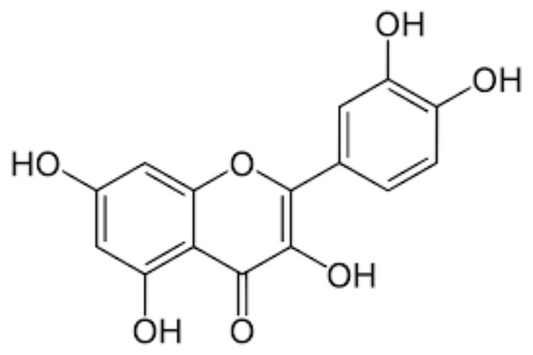Research Consensus: Emerging as a promising compound in anti-aging and cellular health, though more research is needed in human contexts.
Benefit Tips
- Restoration of NAD+ levels in mice has been linked to improved DNA repair and a lifespan increase, (though the exact percentage varies by study).
- Aging and Lifespan: In certain animal studies, like those with worms (C. elegans), NAD+ precursor supplementation led to a 10-25% extension in lifespan.
- DNA Repair and Protection: Mice treated with NAD+ precursors showed a 50% reduction in DNA damage compared to untreated mice in certain studies.
- Neuroprotection: In mouse models of Alzheimer's disease, treatment with NAD+ precursors led to 40% less amyloid plaque ormation, a hallmark of the disease.
- Cardiovascular and Metabolic Health: Mouse studies have demonstrated that NAD+ precursors can enhance blood vessel growth by up to 50%, supporting better cardiovascular health.
- Muscle Function and Mitochondrial Health: In older mice, NAD+ precursor supplementation improved muscle function by 10-20%, depending on the specific metric being evaluated.
- Circadian Rhythm Regulation: Disturbances in NAD+ metabolism can lead to a 50% disruption in the normal circadian activity of certain genes, but supplementation can help restore this balance.
Discovering the Benefits of NAD+: How It Can Help You Age Gracefully
Nicotinamide adenine dinucleotide (NAD+) is an essential cofactor in all living cells and is involved in fundamental biological processes. It plays a crucial role in energy metabolism, DNA repair, and cellular signaling.1-3 However, as we age, the levels of NAD+ in our cells decline, which has been associated with hallmarks of aging and age-related diseases such as metabolic disorder, cancer, and neurodegenerative disease.4
As NAD+ levels decline with age, this can lead to a worsening of mitochondrial function and energy metabolism.4 Mitochondria are the powerhouses of the cell, responsible for generating the energy that our cells need to function. When NAD+ levels decline, mitochondrial function is compromised, leading to a decline in cellular energy production. This can contribute to the development of age-related diseases such as metabolic disorders, cancer, and neurodegenerative diseases.
Emerging evidence suggests that elevation of NAD+ levels may slow or even reverse aspects of aging and delay the progression of age-related disease. For example, recent research has shown that increasing NAD+ levels can help to restore mitochondrial function and improve energy metabolism.5,6 A study published in the journal Aging Cell found that supplementing with nicotinamide riboside (NR), a precursor to NAD+, increased NAD+ levels in human cells and improved mitochondrial function.7 Another study published in the journal Science found that increasing NAD+ levels in mice extended their lifespan and delayed the onset of age-related diseases.8
In addition to its effects on mitochondrial function, NAD+ is also involved in DNA repair. As we age, our DNA becomes damaged, which can lead to the development of age-related diseases such as cancer. NAD+ plays a crucial role in the repair of damaged DNA, and its decline with age can contribute to the accumulation of DNA damage.2 By increasing NAD+ levels, we may be able to improve DNA repair and slow the progression of age-related diseases.
NAD+ is also involved in cellular signaling pathways that regulate aging and age-related diseases. One such pathway is the sirtuin pathway, which is activated by NAD+.9 Sirtuins are a family of proteins that play a crucial role in regulating cellular processes such as DNA repair, cellular metabolism, and inflammation. They are also involved in regulating the expression of genes that are involved in aging and age-related diseases.9 By increasing NAD+ levels, we may be able to activate the sirtuin pathway and slow the progression of age-related diseases.
There are several ways to increase NAD+ levels, including dietary supplementation, exercise, and caloric restriction. One of the most effective ways to increase NAD+ levels is through supplementation with precursors to NAD+, such as nicotinamide riboside (NR) or nicotinamide mononucleotide (NMN).10,11 These precursors are converted to NAD+ in the body and can help to increase NAD+ levels and improve mitochondrial function.
Exercise has also been shown to increase NAD+ levels. A study published in the journal Aging looked at how resistance training affects the muscles of middle-aged people who don't usually work out. The authors found that after 10 weeks of resistance training, the muscle NAD+ concentrations increased by 127%. The study also found that there was an increase in muscle citrate synthase activity levels, which is a marker of mitochondrial density (i.e. the amount of energy-producing machinery in the muscle cells). The results suggest that resistance training can positively affect muscle NAD+ levels, as well as global SIRT activity, which is important for maintaining the health of our cells.12
Caloric restriction is another way to increase NAD+ levels.13 Caloric restriction involves reducing calorie intake without causing malnutrition, and has been shown to increase lifespan and delay the onset of age-related diseases in a variety of animal models.14,15
In conclusion, NAD+ is an essential cofactor in all living cells that plays a crucial role in aging and energy metabolism, DNA repair, as well as cellular signaling.
References:
- Koju N, Qin ZH, Sheng R. Reduced nicotinamide adenine dinucleotide phosphate in redox balance and diseases: a friend or foe?. Acta Pharmacologica Sinica. 2022 Aug;43(8):1889-904.
- Griffiths HB, Williams C, King SJ, Allison SJ. Nicotinamide adenine dinucleotide (NAD+): Essential redox metabolite, co-substrate and an anti-cancer and anti-ageing therapeutic target. Biochemical Society Transactions. 2020 Jun 30;48(3):733-44.
- Houtkooper, R.H., Cantó, C., Wanders, R.J. and Auwerx, J. (2010) The secret life of NAD+ : an old metabolite controlling new metabolic signaling pathways. Endocr. Rev. 31, 194–223
- Schultz MB, Sinclair DA. Why NAD+ declines during aging: it’s destroyed. Cell metabolism. 2016 Jun 14;23(6):965-6.
- Mendelsohn AR, Larrick JW. Partial reversal of skeletal muscle aging by restoration of normal NAD+ levels. Rejuvenation research. 2014 Feb 1;17(1):62-9.
- Katsyuba E, Romani M, Hofer D, Auwerx J. NAD+ homeostasis in health and disease. Nature metabolism. 2020 Jan;2(1):9-31.
- Ryu WI, Shen M, Lee Y, Healy RA, Bormann MK, Cohen BM, Sonntag KC. Nicotinamide riboside and caffeine partially restore diminished NAD availability but not altered energy metabolism in Alzheimer's disease. Aging cell. 2022 Jul;21(7):e13658.
- Zhang H, Ryu D, Wu Y, Gariani K, Wang X, Luan P, D’Amico D, Ropelle ER, Lutolf MP, Aebersold R, Schoonjans K. NAD+ repletion improves mitochondrial and stem cell function and enhances life span in mice. Science. 2016 Jun 17;352(6292):1436-43.
- Mouchiroud L, Houtkooper RH, Moullan N, Katsyuba E, Ryu D, Cantó C, Mottis A, Jo YS, Viswanathan M, Schoonjans K, Guarente L. The NAD+/sirtuin pathway modulates longevity through activation of mitochondrial UPR and FOXO signaling. Cell. 2013 Jul 18;154(2):430-41.
- Martens CR, Denman BA, Mazzo MR, Armstrong ML, Reisdorph N, McQueen MB, Chonchol M, Seals DR. Chronic nicotinamide riboside supplementation is well-tolerated and elevates NAD+ in healthy middle-aged and older adults. Nature communications. 2018 Mar 29;9(1):1286.
- Zapata‐Pérez R, Tammaro A, Schomakers BV, Scantlebery AM, Denis S, Elfrink HL, Giroud‐Gerbetant J, Cantó C, López‐Leonardo C, McIntyre RL, van Weeghel M. Reduced nicotinamide mononucleotide is a new and potent NAD+ precursor in mammalian cells and mice. The FASEB Journal. 2021 Apr;35(4):e21456.
- Lamb DA, Moore JH, Mesquita PH, Smith MA, Vann CG, Osburn SC, Fox CD, Lopez HL, Ziegenfuss TN, Huggins KW, Goodlett MD. Resistance training increases muscle NAD+ and NADH concentrations as well as NAMPT protein levels and global sirtuin activity in middle-aged, overweight, untrained individuals. Aging (Albany NY). 2020 May 5;12(10):9447.
- Evans C, Bogan KL, Song P, Burant CF, Kennedy RT, Brenner C. NAD+ metabolite levels as a function of vitamins and calorie restriction: evidence for different mechanisms of longevity. BMC chemical biology. 2010 Dec;10:1-0.
- Wolf G. Calorie restriction increases life span: a molecular mechanism. Nutrition reviews. 2006 Feb 1;64(2):89-92.
- Colman RJ, Anderson RM, Johnson SC, Kastman EK, Kosmatka KJ, Beasley TM, Allison DB, Cruzen C, Simmons HA, Kemnitz JW, Weindruch R. Caloric restriction delays disease onset and mortality in rhesus monkeys. Science. 2009 Jul 10;325(5937):201-4.




